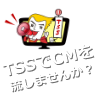First aired on August 6, 2010

In 2010, 65 years after the atomic bomb was dropped on Hiroshima, the City of Hiroshima released a large-scale survey report on the mental condition of the hibakusha who were still alive. The results showed that 1-3% of living hibakusha were still suffering from PTSD (post-traumatic stress disorder). One of them, Tamiko Shiraishi (71) was a volunteer guide at the Hiroshima Peace Memorial Museum. Although she had ten years of experience, she was still occasionally struck by a strong smell while guiding. What exactly was that smell that only Ms. Shiraishi sensed? She says that it is the smell of all living things, buildings, and dirt that were completely burnt, that she smelled while looking for her grandmother immediately after the atomic bombing 65 years ago.


After an examination by a clinical psychologist, results showed that Ms. Shiraishi had mild PTSD (post-traumatic stress disorder) and that the recurring smell was considered to be a flashback symptom. Tragic scenes of people whose skin was burnt and sagging from the heat waves, people dying while begging for water, and the smell that surrounded these left the mind of the six-year-old child scarred with intense trauma.


The program also interviewed other hibakusha still suffering from tragic memories 65 years after the atomic bombing. A 72-year-old man who endlessly fears flashbacks of the billowing “mushroom cloud” chasing him as he ran, and an 84-year-old woman who continues to take sleeping pills to avoid nightmares. With the aging hibakusha, this large scale PTSD survey was said to be the first and last. We took this opportunity to take a closer look at the depth of the scars on the minds and hearts of the hibakusha, who had been left behind for so long.
Scenes from the TSS Archive Project production


Director Keiji Yokogawa

After more than 60 years had passed after the end of the Pacific War, a survey on the emotional wounds of the hibakusha based on a scientific approach now universally recognized as PTSD (post-traumatic stress disorder) was finally conducted. We asked for the cooperation of the “hibakusha who recently started talking” that still experience the smell of the city just after the atomic bombing or have vivid flashbacks of scenes from that day. In addition to what the atomic bombing was like, we carefully asked them to tell us a little bit at a time about why they were not previously able to talk about their experience, and why they started talking about it now. Their stories told of the hearts of young children broken and scarred by tremendous trauma accompanied by the loneliness and sorrow of not being able to talk about it, even to their families. Through this program, I hope that you will truly understand that there is no end to the damage caused by an atomic bomb.
Career
Director Yokogawa started working at TSS-TV in 1994. He was assigned to the media department in 2001. After serving as head of the prefectural government team and prefectural police team, followed by the Hiroshima municipal administration team, he joined the news desk where he creates the daily news and produces news features. Programs that he has directed include the FNN Japan-China Relations 30th Anniversary Special “Revive the Retreating Forests! Green Earth” (2002), and “The Cornered Islands ~ Behind Inviting NLP ~” as well as “The Cornered Islands (Nationwide Broadcast)” (2003). The TSS 30th anniversary special “Save Our Treasure! ~ The 278-day Restoration of Itsukushima Shrine ~” produced in 2005 was selected by the Japan Media Communication Center as a television program to help improve the education level of the world’s developing countries, and sent to Fiji in 2012 and Vietnam in 2017.



